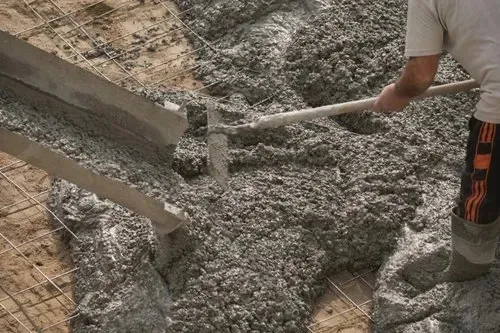Concrete: The Backbone of Modern Construction...!!!
Concrete is a versatile and essential construction material with a long history of use. Its composition, types, uses, and benefits make it a cornerstone of modern construction.

Concrete is among the most extensively utilized construction materials globally, celebrated for its versatility, strength, and durability. As a composite material, concrete is composed of aggregate (such as sand, gravel, or crushed stone), water, and a binder, usually cement. When mixed, these components undergo a chemical reaction known as hydration, which causes the concrete to harden and gain strength.
History of Concrete
The use of concrete dates back to ancient times. The earliest known utilization of concrete-like materials was by the ancient Egyptians, who combined mud and straw to make bricks. The Romans later refined concrete by using lime and volcanic ash (pozzolana), enabling them to construct remarkable structures such as the Pantheon and aqueducts. Roman concrete was extraordinarily durable, standing the test of time for millennia.
After the fall of the Roman Empire, much of the knowledge related to concrete construction was lost. It wasn't until the 18th century that concrete began to be rediscovered and developed further. In the 1820s, Joseph Aspdin invented Portland cement, which became the standard binder for modern concrete.
Composition of Concrete
Concrete consists of three primary ingredients:
-
Aggregate: Aggregate serves as the inert filler material in concrete and includes sand, gravel, crushed stone, or recycled concrete. The size and type of aggregate vary based on the specific application.
-
Cement: Acting as the binder, cement holds the aggregate together. The most common type of cement used is Portland cement, made from limestone and clay. When mixed with water, cement undergoes hydration, hardening and binding the aggregate particles together.
-
Water: Water is crucial for the hydration process and helps achieve the desired workability of the concrete mix. The water-cement ratio is essential in determining the strength and durability of the final product.
Types of Concrete
Concrete comes in various types, each suited to specific applications and requirements:
-
Standard Concrete: The most common type, used for general construction purposes such as foundations, pavements, and buildings, with a compressive strength of 20-40 MPa.
-
High-Strength Concrete: With a higher compressive strength (above 40 MPa), this type is used in structures that require greater load-bearing capacity, like high-rise buildings and bridges.
-
Lightweight Concrete: Made with lightweight aggregates such as expanded clay or shale, it has a lower density and is used where reducing the structure's weight is important.
-
Self-Compacting Concrete: Highly flowable, this concrete can spread into place and fill formwork without mechanical vibration, ideal for complex structures with intricate designs.
-
Reinforced Concrete: Contains steel reinforcement bars (rebar) or mesh to increase tensile strength, commonly used in beams, columns, and slabs.
-
Precast Concrete: Elements are cast and cured in a controlled environment before being transported to the construction site, used for components like wall panels, beams, and pipes.

Uses of Concrete
Concrete is utilized in various applications due to its versatility and durability:
-
Residential Construction: Used for foundations, walls, floors, driveways, and patios in homes.
-
Commercial and Industrial Buildings: Employed in the construction of offices, factories, warehouses, and shopping centers.
-
Infrastructure: Crucial for building bridges, roads, highways, dams, and tunnels.
-
Marine Structures: Used in ports, docks, and offshore platforms due to its resistance to water and harsh marine environments.
-
Architectural Applications: Used to create aesthetically pleasing structures like sculptures, facades, and decorative elements.
Benefits of Concrete
Concrete offers numerous benefits, making it a preferred construction material:
-
Strength and Durability: Capable of withstanding heavy loads and harsh environmental conditions.
-
Versatility: Can be molded into various shapes and sizes, suitable for diverse applications.
-
Fire Resistance: Non-combustible and can withstand high temperatures, providing fire protection for buildings.
-
Low Maintenance: Requires minimal maintenance over its lifespan, reducing long-term costs.
-
Sustainability: Can be made with recycled materials and has a long lifespan, reducing the need for frequent replacements.
In summary, concrete is a versatile and essential construction material with a long history of use. Its composition, types, uses, and benefits make it a cornerstone of modern construction. From residential buildings to commercial structures, infrastructure, and architectural projects, concrete continues to shape our built environment. As technology advances, new concrete formulations and construction techniques will further enhance its performance and sustainability in the future.
What's Your Reaction?

















